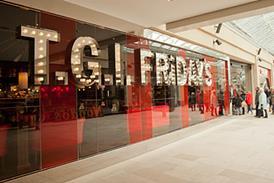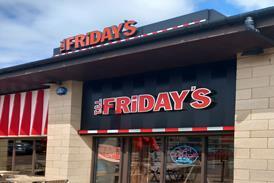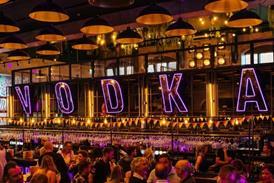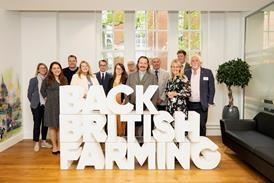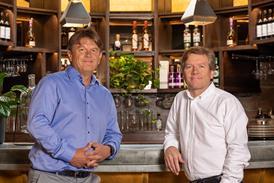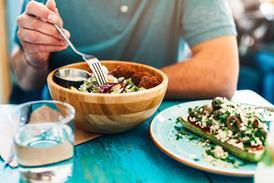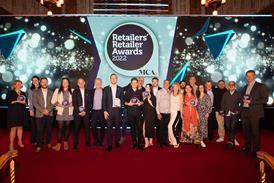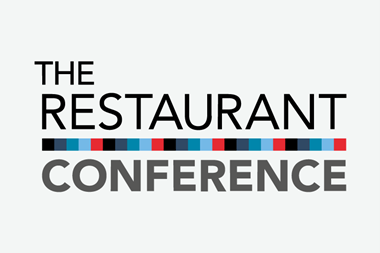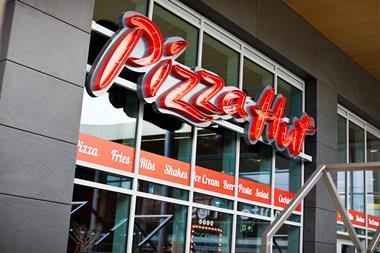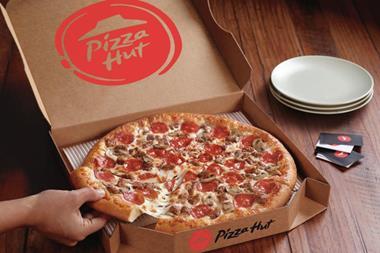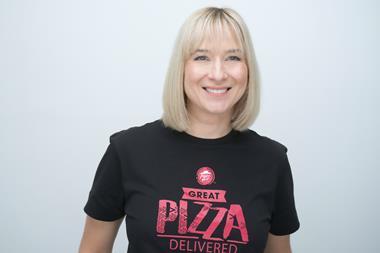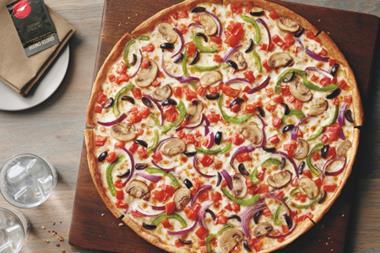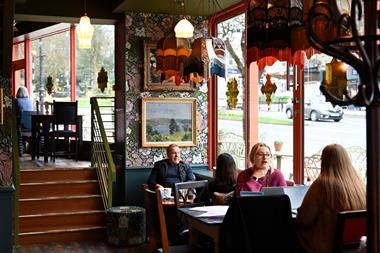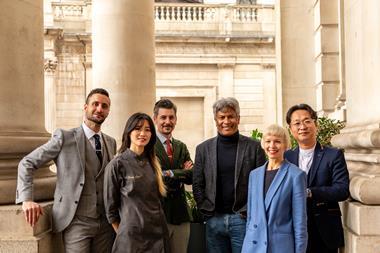Pizza Hut UK’s managing director Neil Manhas talks to MCA’s sister title Food Spark about digital updates to the brand, being ‘maniacal’ about statistics, and the ambition to move the entire delivery estate to its new fast-casual model.
Neil Manhas has been with Pizza Hut for about 15 years. Working on the Yum! Brands-owned delivery side of the business (as opposed to the separately owned restaurant side of the business), he oversaw the launch of the brand’s first fast-casual store last May in Luton.
Since then, the total number of sites with fast-casual formats has risen to 20, with Pizza Hut’s delivery arm spending about a million pounds last year to ‘reimage’ its stores. According to Manhas, all of these stores have seen an uptick in business, which is why he plans to spend a similar amount of money this year, as well as venturing into London with new locations.
“Consumer feedback has been really strong, though there has been some feedback on design and trying to make sure that the customers really understand the menu choices that are available to them,” says Manhas. “In those [fast-casual] stores, we offer an express lunch, so you can get your pizza in five minutes guaranteed.”
Here, he talks to Food Spark about better understanding the customer’s needs and obsessing over statistics.
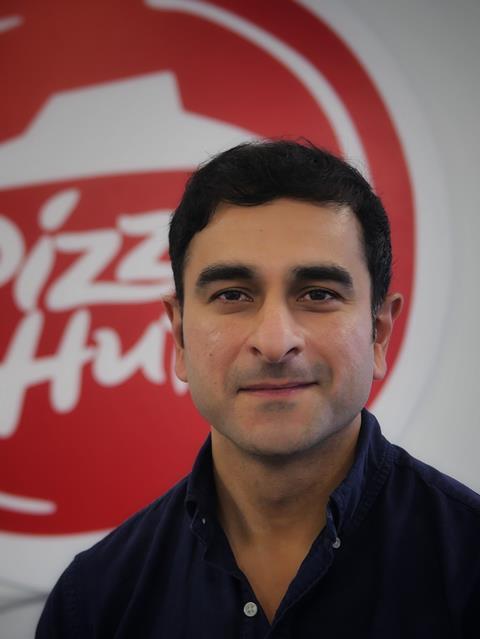
We’re pushing very hard to make sure we’re spearheading all the initiatives that we can in the digital-first delivery industry, and for me that’s about marrying our new technology with customer insight to make sure we really grow as a world-class delivery player.
I think we had some ground to make up in making things easier for the customer. When I think about making things easy for the customer, I think about accessibility, I think about frictionless experience, I think about choice and value as well. Those are the tenets behind what we’re trying to do in the UK.
In lots of ways, the fast-casual delivery store that we built, that really is a product of the whole easier, faster, tastier mandate. We created that prototype to try and deliver the ultimate customer experience, both in terms of the model and in terms of the design. From a model standpoint, it’s a pretty unique concept because it’s actually delivering on five different channels or occasions.
We’re pretty maniacal about our customer feedback stats, and that [Luton] store in particular is way, way ahead of the rest of the estate in terms of our guest experience surveys, both in terms of overall satisfaction and any instances of dissatisfaction, which are minimal.
That store is doing about 50% higher volume than a traditional delivery store. There’s a lot to chew on over that – how much is the model, how much is just a great location we found – but it’s obviously hugely encouraging.
Everyone wants to be modern and contemporary. For us, a lot of that was around making sure that we opened up the experience, that we opened up the kitchen; having that front-facing make table, where customers can actually see the pizza being created in front of them, has been a real win for us. It sounds obvious when you say these things but bringing that into a pure delivery channel was a pretty big step for us to make.
The ambition is that the entire estate moves to that new model once we are entirely convinced that we have locked in the formula – and the formula I think is going to look different depending on the dynamics of specific trade zones, and that’s the bit that we’re just building the muscle on. We opened these in different places to see what worked vis-a-vis how many seats should we put in for a store in this particular geography – maybe it’s none, maybe it’s some – as well as how aggressive we want to be on the takeaway in terms of price point.
In terms of key product launches, on the restaurant side we introduced a vegan cheese option on the back end of 2017, maybe early 2018, and that enabled us to introduce a Jack ‘n’ Cheese pizza off the back of that to celebrate Veganuary this year. We said if we sold more than 10,000 of those it would become a permanent item, and it’s become a permanent item, so that’s great. We’re looking hard at how we can replicate that on the delivery side of the business. It’s key that we are very sure that we can do it successfully and do it well, but it’s very much on my radar. Watch this space!
The other one we’re very excited about, and we have been launching it in other markets within our wider European business, is our San Francisco sourdough-style pizza. It’s very present in our business over in Poland. It is in a handful of stores in the UK, because we’re testing, building up the muscle, and refining the product. We want to make sure we’ve buttoned down the exact positioning and offering of that more artisanal product within our menu line-up so that it really is a success.
We’re continually trialling new stuff, whether it be products or changes to our value offerings or just new features, and we look relentlessly at the data. I’m obsessed with it. I’ve got an app on my phone and I’m literally always looking at the conversion stats, where the customer is coming from, what have they ordered, is average spend better through this channel, etc.
Finally, last year we successfully launched a loyalty programme... and with relatively little marketing behind it we’ve now got over a million rewards members who are enjoying the benefits of that scheme. It genuinely is equipping us way better to meet and understand the customer’s needs.

Some of the products that we have launched are because of being able to launch surveys off the cuff through our website – a couple of weeks ago we launched the buffalo chicken pizza. It gives us confidence that something is going to work well with consumers, because it’s not just based on standard customer research, which of course we do as well, it’s also a questionnaire on the website. We get thousands of responses. It’s not just 300 customers that we interviewed, I’ve got real data about how customers feel about the product.
Slightly more than 80% of our delivery business and sales across the 400 delivery huts that we have comes from online.
Through both the website and the feedback we collect, we look very hard at what customers are asking for. There was one example where customers wanted more types of sharing sides from us, and on the back of that we ended up creating the ‘tear and share’ product. That was built off observations that customers were going onto the starters page and not necessarily ordering a started, then at some point us serving up a question on a questionnaire.
There are things that don’t work. We’re continually trying to test and learn. If we’re not failing enough, it would suggest we aren’t testing or trying enough.
In the delivery game, being on time and speed is so essential that keeping the menu as streamlined as possible is key, finding the right balance of variety versus manageability.
The original version of this article was originally published on foodspark.com, a digital subscription service designed to inspire and inform innovation across the food industry.
For anyone needing to stay ahead of the culinary curve, Food Spark will offer immediate access to the emerging trends, ingredients, personalities and headwinds defining the future of food. Explore more content by visiting Food Spark or by requesting a demo: joinus@foodspark.com or 01293 610371.
Precis
‘It’s about choice, value and a frictionless experience’
Pizza Hut UK’s managing director Neil Manhas talks to MCA’s sister title Food Spark about digital updates to the brand, being ‘maniacal’ about statistics, and the ambition to move the entire delivery estate to its new fast-casual model.


